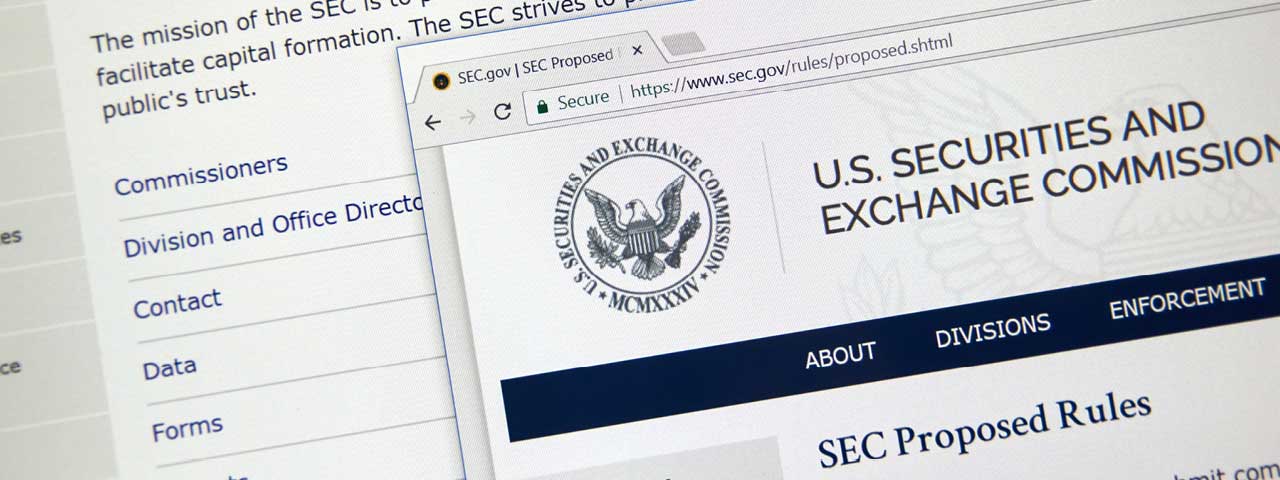
SEC Proposes Updates to Form S-8
December 07, 2020
The SEC has issued two proposals to update Form S-8 and Rule 701. The first proposal would modernize Form S-8 and Rule 701. The second proposal would allow companies to temporarily rely on Form S-8 and Rule 701 to issue equity awards to gig workers.
The modernization proposal is 156 pages and the gig-worker proposal is 105 pages, so there’s a lot to cover (for a blog writer who covers equity compensation, it’s like an early Christmas present from the SEC). Today’s blog entry discusses the modernizations proposed for Form S-8; I’ll get to Rule 701 and gig workers in a future entry.
Background
Form S-8 is used by public companies to register stock that will be offered to employees and others providing services to the company in compensation for those services. Rule 701 is a registration exemption that private companies can rely on to offer stock to employees and other service providers through compensatory arrangements.
Neither Form S-8 nor Rule 701 has been materially updated since 1999, so it seems like it might be time. The SEC first floated the idea of updating Form S-8 and Rule 701 back in 2018 (see my blog entry, “Rule 701 and Form S-8 Developments”). The proposed updates would implement many of the ideas that the SEC asked for comments on back in 2018.
One idea the SEC floated back in 2018 was to eliminate Form S-8 entirely and instead to allow public companies to rely on Rule 701. This idea appears to have been discarded, but the SEC has proposed a number of amendments that would improve Form S-8.
Multiple Plans Registered on One Form S-8
The SEC has proposed clarifying that multiple plans can be registered on a single Form S-8. Theoretically, this might already be permissible, but it isn’t expressly stated in the instructions to Form S-8 and I don’t think many, if any, companies use Form S-8 in this manner. More importantly, Form S-8 would be updated to allow companies to register new plans and additional share authorizations by amending an existing Form S-8 filing.
This would allow companies to easily transfer shares from one plan to another, without having to re-register the shares. When a new equity plan is adopted, it is common for unused shares in the plan it is replacing to be transferred to the new plan. Under the current Form S-8, companies frequently end up registering the unused shares twice: under the original plan when it was adopted and again upon adoption of the new plan. Under the proposed rules, this would be eliminated. Companies could simply amend the Form S-8 filed for the original plan to include the new plan (and any new shares allocated to it). Any shares already registered for the original plan could then be used for either plan.
Taking this one step further, a company could file a single Form S-8 registration statement that covers all its equity compensation plans and could continue to amend that S-8 to cover future plans as they are adopted. For example, a company could register, say, five million shares to be issued under any of, say, five equity compensation plans included in the Form S-8 registration statement. If the company later adopts a sixth plan, it could amend the Form S-8 to add that plan to it.
Note however, that this doesn’t alleviate the requirement to obtain shareholder approval of equity compensation plans, including the specific number of shares that will be issued under each plan. Every equity plan will still have its own share reserve for which share usage must be tracked. If desired, companies can continue to file separate Forms S-8 for separate plans. This may be preferable in situations where plans differ materially (e.g., a company might file separate Forms S-8 for its ESPP, 401(k), and equity incentive plans) and where there isn’t a need to transfer shares from one plan to another.
Expanding the Scope of Form S-8
The proposal would also expand the individuals that would be covered under Form S-8, so that it could be relied on for grants and issuances to the following entities:
- Business entities providing consulting or advisory services, provided specified conditions are met.
- Former employees (and executors, administrators, and beneficiaries of the estates of deceased employees, as well as guardians for incompetent former employees) in circumstances not already covered under Form S-8, provided specified conditions are met.
- Employees of non-majority-owned subsidiaries (employees of majority-owned subsidiaries are already covered under Form S-8).
This is just the first of several blog entries I’ll be writing about the SEC’s proposals. Future entries will cover the proposals for Rule 701, possible future proposals related to ESPPs, and the proposals related to gig workers. Can’t wait? Liz Dunshee of CCRcorp provides highlights from both proposals in TheCorporateCounsel.net Blog, see “SEC Proposes Amendments to Form S-8 & Rule 701.”
-

By Barbara BaksaExecutive Director
NASPP
